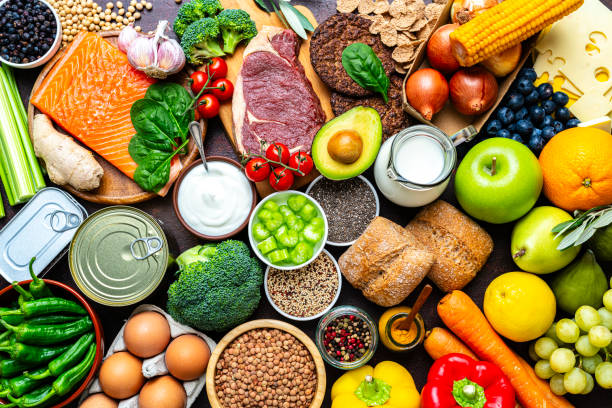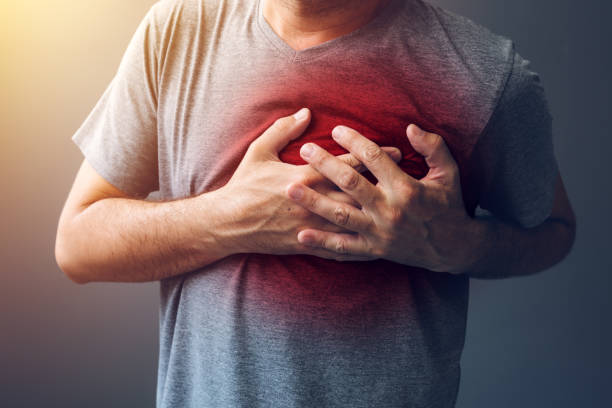Premenstrual syndrome—three words that send a silent shudder through millions of women every month. From mood swings and breast tenderness to relentless bloating and food cravings, PMS feels like a personal betrayal by your own body. But what if the relief you seek isn’t hidden in a pill bottle or behind a heating pad? What if it’s sitting on your plate?
Food plays a critical role in the hormonal symphony that is your menstrual cycle. What you eat can directly influence how you feel in the days leading up to your period. While hormones like estrogen and progesterone orchestrate most of the premenstrual drama, your diet can either calm the storm or fan the flames.
The bloating, irritability, fatigue, and digestive upset that accompany PMS are not inevitable. They’re signals—subtle (or not-so-subtle) nudges from your body that something is off balance. The good news is that with the right foods, you can not only quiet these signals but transform your cycle from a monthly curse into something more manageable—possibly even empowering.
Understanding Bloating and PMS from the Inside Out
Before diving fork-first into the solution, it’s worth pausing to understand why bloating and PMS happen in the first place. In the second half of your cycle—known as the luteal phase—your progesterone levels rise. This hormone is essential for preparing your body for a potential pregnancy, but it’s also the culprit behind sluggish digestion and water retention.
As progesterone slows down the movement of your intestines, food lingers longer than usual, leading to gas, constipation, and bloating. To make matters worse, estrogen fluctuations can cause your body to retain sodium, which means more water retention and that unmistakable puffy feeling.
Throw in sugar cravings, mood dips, and the general sense that your body has been hijacked, and it’s no wonder PMS can feel so overwhelming. But here’s the empowering part: nutrition has the power to smooth out these hormonal peaks and valleys, helping you regain control over how your body feels and functions.
The Gut-Hormone Connection You Didn’t Know You Had
If you think PMS is just about your reproductive organs, think again. The gut and your hormones are in constant conversation. Your digestive system not only absorbs nutrients but also plays a vital role in eliminating excess hormones—particularly estrogen.
When your gut is inflamed, sluggish, or out of balance, your body struggles to clear estrogen efficiently. This excess estrogen can worsen PMS symptoms like bloating, breast tenderness, and irritability. Meanwhile, an unhappy gut often means an overgrowth of bad bacteria, which produce endotoxins that can trigger systemic inflammation—adding fuel to the hormonal fire.
So, what does this mean for your plate? It means choosing foods that support both your digestive health and your hormonal balance. Foods that feed your good gut bacteria, promote regularity, and provide key nutrients can significantly reduce PMS and bloating. It’s not about restriction—it’s about nourishment, balance, and empowerment.
Balancing Blood Sugar: The Hidden Key to Hormonal Calm
One of the most overlooked aspects of PMS is the role blood sugar plays in your mood and symptoms. If you find yourself reaching for chocolate, chips, or anything salty-sweet in the days before your period, you’re not alone. This craving isn’t a lack of willpower—it’s your hormones calling out for help.
Estrogen and progesterone directly influence insulin sensitivity. As their levels shift, your blood sugar becomes more volatile, leading to spikes and crashes that intensify mood swings, fatigue, and cravings. When your blood sugar is out of balance, cortisol—the stress hormone—also rises, compounding bloating and irritability.
The solution is not to cut out carbs entirely, but to be mindful of the kinds of carbohydrates you eat. Pairing complex carbs with protein and healthy fats slows the release of sugar into the bloodstream, keeping your energy stable and your hormones in check. Think of it as giving your body a gentle, nourishing ride instead of a hormonal rollercoaster.
Magnesium: The Mineral Your Cycle Craves
There’s a quiet hero in the world of nutrition that doesn’t get nearly enough attention when it comes to PMS and bloating: magnesium. This essential mineral acts like a soothing balm for your nervous system, muscles, and mood. It helps reduce water retention, eases cramps, and supports serotonin production—which is why you feel a little more zen after a magnesium-rich meal.
Magnesium also plays a key role in regulating cortisol levels. When your stress hormones are high, your body burns through magnesium like wildfire. Low levels of this mineral have been linked to more severe PMS symptoms, including irritability, headaches, and even sugar cravings.
Incorporating magnesium-rich foods can be a game-changer for your cycle. From leafy greens to seeds to dark chocolate (yes, really), these foods offer not just symptom relief but long-term hormonal support.
Potassium and Bloating: A Powerful Pair
While sodium often gets the blame for bloating, it’s the imbalance between sodium and potassium that really causes the trouble. Most people consume far too much sodium and not nearly enough potassium, creating the perfect storm for water retention and that dreaded balloon-belly feeling.
Potassium helps your kidneys flush out excess sodium, restoring fluid balance and reducing bloating. It also supports muscle function—including the smooth muscles in your digestive tract—helping to keep things moving and reduce that backed-up, bloated sensation.
Incorporating potassium-rich foods before and during your period can significantly reduce abdominal distension and improve your sense of well-being. Think of potassium as nature’s gentle diuretic, working in harmony with your body rather than against it.
Fiber: Your Hormonal Housekeeper
If there’s one nutrient you should never underestimate when it comes to hormone balance, it’s fiber. Acting like a natural detox agent, fiber binds to excess estrogen in your digestive tract and ushers it out of the body. Without enough fiber, estrogen can be reabsorbed into the bloodstream, exacerbating PMS symptoms and increasing bloating.
Fiber also feeds your gut microbiome, supporting the production of short-chain fatty acids that lower inflammation and improve intestinal motility. This means fewer digestive issues, better elimination, and less water retention. The smoother your digestion, the smoother your cycle.
But not all fiber is created equal. The best sources come from whole, plant-based foods—particularly fruits, vegetables, seeds, and legumes. These also provide a cocktail of vitamins, minerals, and antioxidants that your body craves during the luteal phase.
Hydration and Herbal Allies
It may sound counterintuitive, but drinking more water is one of the best things you can do for bloating. When you’re dehydrated, your body clings to every drop of water it can find, leading to puffiness and water retention. Adequate hydration helps flush out toxins, supports kidney function, and keeps digestion flowing.
You can take it a step further by incorporating herbal teas known for their anti-inflammatory and diuretic properties. Peppermint, dandelion root, and ginger teas not only soothe the digestive tract but help your body release excess fluid. These teas are also calming, which makes them perfect for those moody, restless evenings before your period begins.
Warm beverages, especially those infused with herbs, offer a ritualistic way to reconnect with your body. They calm the nervous system, reduce cramping, and give your digestive system the gentle nudge it needs to release bloating and tension.
The Estrogen Equation: Detoxifying with Food
Estrogen dominance—where your body has too much estrogen relative to progesterone—is a common driver of PMS symptoms. It’s linked to heavy periods, mood swings, irritability, and—you guessed it—bloating. Your liver is the main detox organ that breaks down and processes estrogen, so supporting liver function is key to balancing your hormones.
Certain foods act like allies to your liver, aiding in estrogen metabolism and helping your body maintain hormonal harmony. Cruciferous vegetables, such as broccoli, cauliflower, and Brussels sprouts, contain compounds like indole-3-carbinol and sulforaphane that help detoxify excess estrogen through the liver.
Adding these vegetables into your meals throughout your cycle can significantly lighten the hormonal load on your system. When your liver is working efficiently, your whole body benefits—from clearer skin to better mood, and yes, much less bloating.
Sugar, Salt, and the Cycle Saboteurs
Processed foods loaded with refined sugar and excess salt are some of the worst offenders when it comes to PMS and bloating. Sugar triggers spikes in insulin and cortisol, leading to mood crashes, cravings, and increased inflammation. Salt causes your body to hold on to water, worsening puffiness and abdominal swelling.
Unfortunately, these are the exact foods we often crave during PMS. The more unbalanced your hormones are, the more likely your body is to seek out quick sources of energy and comfort. It becomes a vicious cycle: bloating causes discomfort, which leads to stress, which increases cortisol, which triggers cravings—and around you go.
Breaking this cycle requires preparation, not perfection. Having nourishing, hormone-supportive foods on hand can make it easier to avoid the trap of last-minute salty or sugary snacks. It’s not about depriving yourself; it’s about choosing foods that make you feel better in the long run rather than just masking symptoms.
The Emotional Side of Eating and PMS
There’s an emotional landscape to PMS that deserves just as much attention as the physical symptoms. The days leading up to your period can feel raw and vulnerable—like your emotional bandwidth has been compressed into a thin, fragile line. And for many, food becomes a way to soothe, distract, or cope.
Understanding this emotional dimension is crucial. When you approach your cycle with compassion and awareness, you’re better able to notice your patterns and make choices that truly nourish you—not just momentarily satisfy a craving. That piece of chocolate may feel like comfort, but what your body is really asking for might be magnesium, rest, or hydration.
Building a relationship with food that’s rooted in trust and attunement allows you to use your plate as a tool for healing rather than punishment. It transforms PMS from something that happens to you into a rhythm you move with—gently, consciously, and with curiosity.
Cycle-Syncing Your Nutrition: A Long-Term Approach
One of the most powerful things you can do to reduce PMS and bloating over the long term is to align your diet with your menstrual cycle. This approach, often called cycle syncing, involves eating in ways that support the hormonal shifts in each phase of your cycle.
In the follicular phase (just after your period), your energy and estrogen rise. This is a great time for lighter foods, fresh vegetables, and proteins that fuel ovulation. In the luteal phase—the PMS zone—your metabolism increases, and your body benefits from warm, grounding foods rich in magnesium, B vitamins, and complex carbohydrates.
By eating in sync with your cycle, you’re no longer fighting against your hormones—you’re working with them. Over time, this can lead to fewer symptoms, less bloating, more energy, and a deeper connection to your body’s rhythms.
PMS Is a Messenger—Not a Life Sentence
Your body is not broken. PMS and bloating are not punishments. They’re signals—your body’s way of waving a red flag and asking for support. And food, in all its nourishing, vibrant forms, is one of the most powerful ways to answer that call.
When you treat your diet as part of your self-care toolkit—not just a way to look a certain way, but as a way to feel empowered—you begin to reclaim your cycle. You discover that those painful, bloated, exhausting days don’t have to be your norm. Relief is not just possible—it’s on your plate.
The next time you feel that familiar PMS fog rolling in, reach for the foods that remind your body it’s supported. Reach for color, fiber, minerals, hydration, and warmth. Reach for what heals.
Because your cycle isn’t a curse—it’s a compass. And the right food can help you follow it home to yourself.






